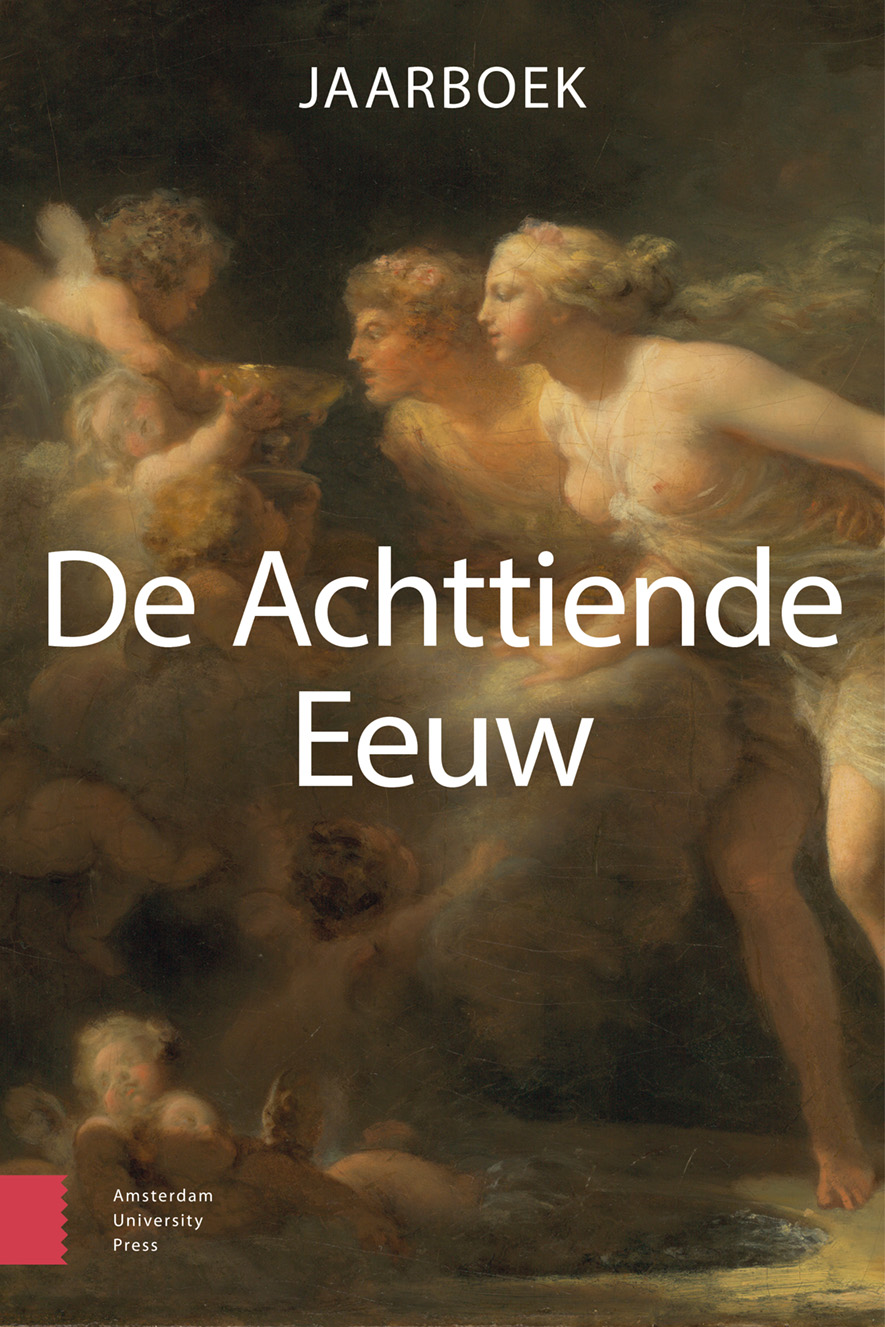- Home
- A-Z Publications
- De Achttiende Eeuw
- Issue Home
De Achttiende Eeuw - Current Issue
Volume 56, Issue 2024, 2024
- Van de redactie
-
- Afzonderlijke bijdragen
-
-
-
Afscheid van een radicaal
More LessAuthors: Dirk Alkemade & Mart RutjesAbstract: This article examines the end of the Dutch Revolution through the life and remarkable political career of Pieter Linthorst during the Batavian Revolution. Linthorst rose through the ranks of the revolutionary administration, advocating for radical reform even as the revolution entered a moderate phase. The article delves into his public criticisms of the Executive Regime and his defence of the constitution f Read More
-
-
-
-
Scènes uit een huwelijk
More LessAuthors: Kees van Strien & Marleen de VriesAbstract: This ‘portrait’ of Anna Elisabeth Christina van Tuyll van Serooskerken (1745-1819) is based on what remains of her correspondence with her husband Frederik Christiaan van Reede (1743-1808), lord of Amerongen and fifth earl of Athlone. Whereas he enjoyed a life of public offices and privilege, she was mainly occupied in their Utrecht home and Amerongen castle, where she usually spent the summer. Despite bein Read More
-
- Drank & Drugs
-
-
-
Drank en drugs in de achttiende eeuw
More LessAbstract: Although the concept of ‘drugs’ was unknown in the eighteenth-century Dutch Republic, the consumption of psychoactive substances was part of the diet. Consumption patterns shifted significantly during the century. Alcohol was consumed increasingly in the form of jenever (geneva) and wine rather than beer, snuff tobacco became popular alongside pipe smoking, the popularity of coffee and tea contin Read More
-
-
-
-
Winst of welzijn?
More LessBy Philip PostAbstract: This article examines how opium was used and regulated in the Moluccas at the turn of the nineteenth century. While much research has focused on the economic effects of this trade on the economy in Java, this article demonstrates the importance of opium in the Moluccas as well. Although the VOC imposed penalties on opium use, it was tolerated in practice and was popular as a painkiller and used within local cour Read More
-
-
-
Kortjakjes craze?
More LessAbstract: In the first half of the eighteenth century, London’s moralists campaigned against the rise in popularity of a new distilled beverage: gin. Current-day historians argue convincingly that this so-called gin craze was a moral panic. On the other side of the Channel, gin’s Dutch equivalent jenever also rose in popularity during the eighteenth century. Yet, a similar jenever craze did not take place there. This article traces ho Read More
-
-
-
Van theeziekte tot snuiflust
More LessAbstract: Around 1700, three farces were put on the Dutch stage in which addiction to fashionable consumer products played an important role: Pieter Bernagie’s De románzieke juffer (1685), De buitenspoorige toebaksnuiver by Enoch Krook (1697), and De theezieke juffers by Enoch Krook and Daniël Kroon (1701). On the one hand, these farces functioned as a form of social criticism, in which addicted characters illustrated Read More
-
-
-
Wetenschappelijke verhandeling
More LessBy Anna BruinsAbstract: This article shows how knowledge about tea circulated through the Dutch East India Company’s (VOC’s) information network during the seventeenth and eighteenth centuries. Knowledge about tea was not only an example of the scientific advances Europeans made regarding Asia, it can and should also be seen as a commercial product in itself. The production and circulation of tea knowledge was nourished in consid Read More
-
-
-
‘Kräuter die in unsern Landen wachsen’
More LessAbstract: During the eighteenth century, the consumption of Chinese tea became a widespread phenomenon all throughout the German states of the Holy Roman Empire. Germans from a multitude of social backgrounds took to the consumption of this psychoactive substance in their daily lives. Shortly after its introduction, the popularization of tea was followed by a counterreaction by German writers and intellectuals, in an Read More
-
- Spectator
-
-
-
Het verhaal van Oranje Nassau
More LessAbstract: This essay reviews the fourth episode of ‘The story of Orange Nassau’, a series of Dutch Public Television on the history of the Dutch Stadtholders and Kings from the House of Orange and Nassau from William I Prince of Orange to King William Alexander.
-
-
Most Read This Month Most Read RSS feed
Article
content/journals/25894617
Journal
10
5
false
en


